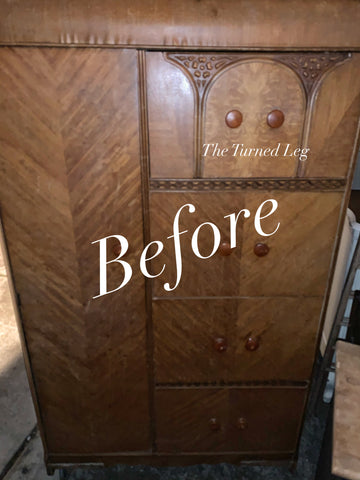 Finding good junk isn't easy. You need to constantly be on the lookout to find the good stuff. I have been looking for "good junk" every since I was a kid. I use to even look out my car window for coins on the side of the road. Now I have upgraded to shopping garage sales, thrift stores, and even finding curbside treasures. Do you like good junk, too? Want to learn how to find the good junk and sort it out from the bad junk?
Finding good junk isn't easy. You need to constantly be on the lookout to find the good stuff. I have been looking for "good junk" every since I was a kid. I use to even look out my car window for coins on the side of the road. Now I have upgraded to shopping garage sales, thrift stores, and even finding curbside treasures. Do you like good junk, too? Want to learn how to find the good junk and sort it out from the bad junk?
My definition of "good junk" these days is usually furniture, but I think these tips can help you make sure whatever you have found is "good" before you are stuck with it.
Tip #1 - Check It Out
Sure you checked it over, but did you really? Just because you were excited or it was dark, don't rush over this step. You will regret it later. Go a little over the piece and then over it again. Use a flashlight. Open all the drawers. Make sure the drawers work and the bottoms are secure. Are the drawers connected with dovetails? Also, make sure there are no little surprises. I have found antique treasures in drawers and dead mice. Some surprises are better than others. Make sure you know what you are getting into before you load up that piece of furniture.

A common problem - no hardware
Tip #2 - What is it made of?
Do you really know what it is made of? Is it wood at all? Is it laminate? Knowing what you have to work with at the start will make the whole process go smoother. I recently found a dresser that was covered in a wood grain contact paper. Maybe the top wore out contact paper was the best solution. Before I put too much effort into redoing that piece I am removing the contact paper first.
Is the wood red? Red-colored wood means a huge chance of bleed-through (tannins from the wood that come through) and more work for you. If you are thinking of redoing the piece in a light color be prepared for using a lot of stain block and paint to prevent bleed-through. Want to learn more about preventing bleed through and what causes it? Check out my blog post on 3 Tips to Pick Your Perfect Paint Color.

This piece was looking a little red in color. I went with it and painted it dark instead of battling the bleed-through.

This bookcase was made with vintage crates on the back. Luckily it was all in good shape. Finding a replacement would have been difficult.
Tip #3 - Hardware?
Does the piece have all the hardware? Is it just hiding in a drawer? You don't know how many times I have told myself, "It is only missing one pull. That will be easy to find." It never is that easy. Having all the hardware at the start is the easiest way to start a makeover. If you do not have the original vintage hardware check out my YouTube Video called No Vintage Hardware, No Problem to give you some ideas.
How I measure for hardware. This is the dreaded 3.5" one of the hardest replacement hardware to find. Having a measuring tape with you is always a good idea.

Tip #4 - The Wobble Factor
Is the piece sturdy? Try to rock it side to side. Did you flip it over and see if the base is sturdy? Is it missing screws or wing nuts. Sometimes the screws have loosened over time and it is an easy fix. Sometimes you need a rebuild. Many tables and desks have little triangle-shaped blocks added for stability. If those are missing it can make a big difference. If the piece is wobbly make sure you know why and if it can be fixed.


Tip #5 - How heavy is it?
If you have a whole crew of furniture helpers this might not be an issue, but since I usually just have just me to haul the piece around the weight of the piece is a big factor. I don't just have to get the piece home. I have to paint it, stage it and haul it to the shop. Really heavy furniture is exhausting and sometimes not worth it. After my grandfather passed away my cousins and I moved a bunch of the furniture. We now call all the heavy furniture "grandpa-furniture" Having a few pieces that are heavy is usually no big deal but make sure you know the weight. Make sure it is worth all the effort.
Tip #6 Where should I look?
Everywhere. No seriously, everywhere. Let all your friends and family know what you are looking for. I seriously get text messages from friends about curb-side treasures all the time. How cool is that? Check out thrift stores, estate sales, garage sales, and even drive an extra block or two on trash day. You never know where you will find that next treasure. Make sure to carry straps and extra blankets to help you take your good junk home.


I hope all of these tips help you to find the good junk. Remember to always keep an open mind. You never know where you will find your next piece. I also always keep a junking toolbox in my car at all times so I am ready.
Happy Junking!

